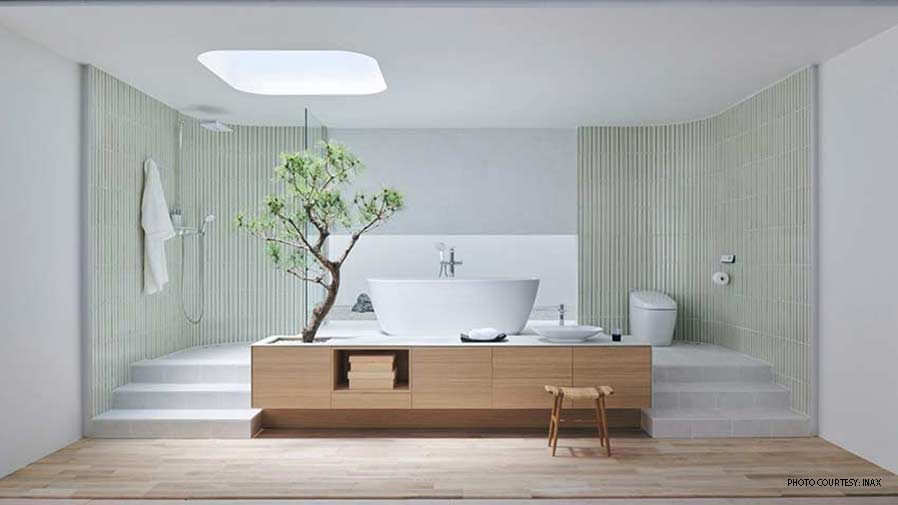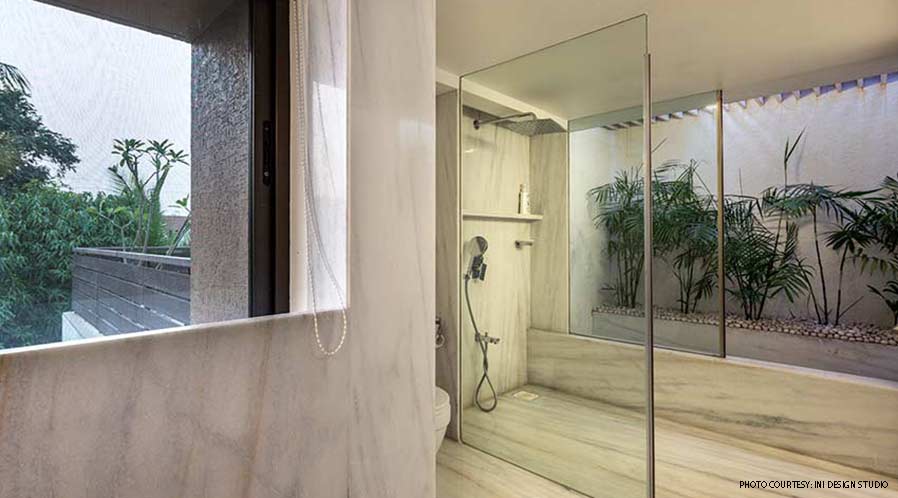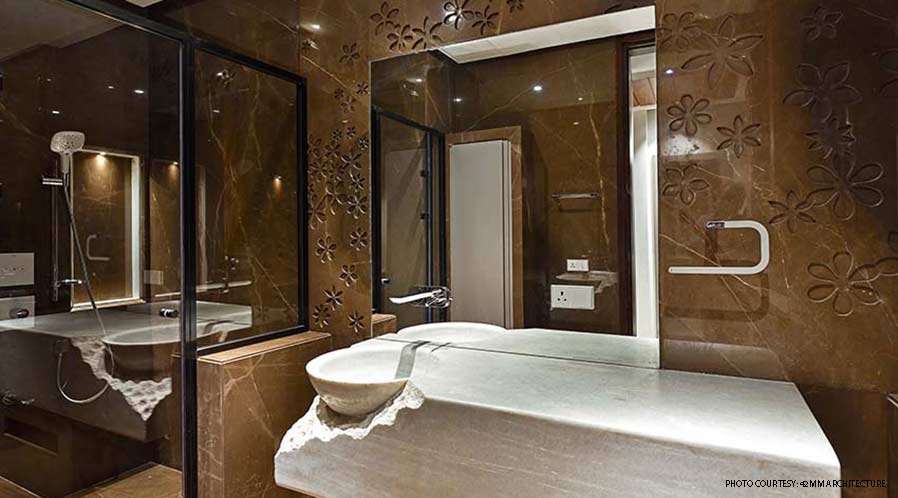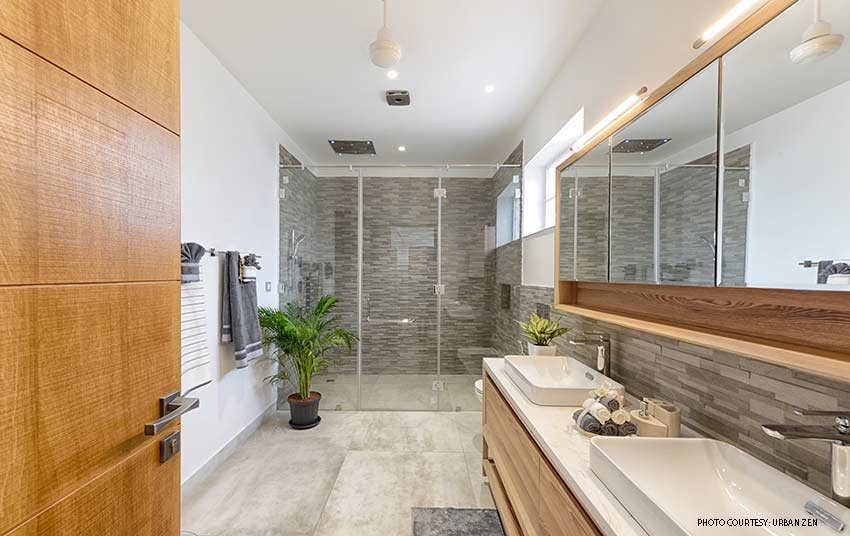Luxury for the New-Age Consumers
Washrooms are set to hit the hyperloop as far as the modern clients’ desire for more and urge to change drives the high-end market.
The washroom has, for decades, turned into the symbol of affluence, creativity and social snob value as well for most consumers who can afford the indulgence. Even those who cannot splurge, innovative design and intelligent space management is something they would like to use to have washrooms that can be as spa like as possible.
However, the luxury market is at some sort of a revolution or change at what defines as luxury in the digital generation since that holds the money power today. The productive consumer today is of a generation that grew up in the digital era. This consumer is keen on fashion statements and is also redefining the value of new forms of consumerism.
Not only the products used but the relationship and connect between the consumer and the brand is also being subjected to intense scrutiny and keen detailed appraisal by the new consumer. In other words, there is a distinct redefining of the brand-consumer relationship. This clearly puts pressure on manufacturers and retailers to develop their products and service to the whims and often fleeting attention to concepts of luxury.

While the market has generally stood by opulence, unaffordability and exuberance to define luxury, the new parameters might call for a relook. The washroom brands have to redefine their attitude to design to reflect this demographic shift better.
Experts have stated that ‘to stay relevant, luxury brands will have to create more meaningful engagement with the new clients who need more personalised experiences and value propositions to fit modern digital-infused lifestyles’.
The professional is in centre-stage
Architects and interior designers are the final arbiters of this need. They actually concretise this sentiment of the consumer and not only inform the market of trends with their designs but also educate the restless consumer who needs that something new without being able to put in exact words.

If ostentation was the buzzword in the last century and minimalism was the stage that emerged as a revolt against the splurging and display of wealth, modern designs emerged from the ‘raw, rough textures commonly associated with the natural world. It is what the interiors world eloquently calls ‘rough luxe’ – that sublime amalgamation of rough and sleek’.
If we remember, wood, which was elegant as ever but always more expensive defined the final frontier of ‘natural’ in the washroom. Since it was destructible despite the treatments and technologies to make it long-living, the option of creating wooden looking ceramic tiles and also materials composed in the lab to resemble soon filtered into the scene.
It has come full circle now. More roughly hewn the better, real wood panelling has reinterred the washroom all over the world, in every climate condition. Big planks of wood are finding acceptance for their wonderfully raw aesthetic. Preventing moisture in a washroom is like dodging the raindrops to stay dry when it’s pouring therefore cork is now the washroom design’s favourite material for some.
Similarly, stone, which is a hardier alternative to wood is replacing the expensive versions of materials from the same origin. The rough edges that look good definitely demand more maintenance. This message has gone out loud and clear. So, if luxury was understood as something that not everyone can afford, this entry of real nature into the washroom is rubbing it quite clearly.
“If ostentation was the buzzword in the last century and minimalism was the stage that emerged as a revolt against the splurging and display of wealth, modern designs emerged from the raw, rough textures commonly associated with the natural world.”
Class is in the details
Accessories lend the luxe look ultimately but the total design needs to incorporate the proactive use of accessories in the space planning. Old structure renovations of many luxury hotels now leave the old walls intact in many spaces just to highlight the elegance of the original structure while adding the modern-day elements for better functionality.
Similarly, the style of keeping the unspoiled beauty of an existing wall work or adding a modern twist to the washroom are not gimmicks but style statements that relate to the consumer.
The interior designer now lingers on in the washroom, so to say, with the planning of minor details that extend the brief. For example, the idea to do away with bath mats and accessorise with soft, tactile fur rugs or antique carpets is prepared not after the washroom is built but when it is planned.
The view from some experts is that the use of natural lighting in today’s high rise and copped up residences, even in the high-end segment is also about style statements. Vanity mirrors, either suspended from the ceiling or hung on the wall, are being set up beside a large window in the washroom. This gives you a good view of the outside world every morning.
Powder rooms will now totally go over the top with engaging looks of pure black tiles, exotic jungle wallpaper, or even bold floral patterns that are in stark contrast to the quiet or more sedate minimalism of the main washroom in residences.
The change is coming in strong in the accessories. The blank spaces retain the power of minimalism but storage areas also turn more incongruous. Simple things like placing toiletries with reach of the shower space is also getting designer. No one even thinks about having the ugly steel receptacles or other external stands. In fact, recesses in the shower enclosures create a sense of openness. In fact, the vanity unit near the washbasin is one of the more frequently used spaces in the washroom and is front and centre with its placement.

Tech trends rise geometrically
The new trend seems to be not hiding anything. On the contrary, revealing everything but in style, seems the leitmotif of the modern bath space. Taps and mixers get all the basin-based glory, but what about the water pipes? Tearing up the washroom rulebook, now there are manufacturers and designers who bring the piping out from behind the wall, creating a sleek design in brushed stainless steel that doubles as a towel bar!
An Italian designer has created a combo of water supply pipe and towel rack, simply by taking the pipeline out of the wall and turning it into a gleaming towel rail. The pipe connecting the faucet to the main line outside doesn’t remain hidden in the walls but makes a brief appearance in the same gleaming metallic shade as the faucets and other fixtures at an angle that converts it into a towel hanger.
The sleek look gets a thumbs up yet again as experts predict a rise in handleless cabinetry, making for that clutterless smooth appearance. Similarly, others have forecast that single style finish and even single material and metal fixtures and materials are also going to change. The new consumer is also fickle to the taste. By including different finishes and materials, there is always a way out to change other aspects of washroom décor design to create a different look over the years without ripping out floors or walls.
“The increasing integration of smart bathrooms in the development of smart homes, along with government regulations regarding energy use and emissions supports the rise of tech innovations in the washroom design.”
Technology evolves and so do the needs. It’s the age of USB chargers in vanity drawers and app-controlled music and not just aromatherapy experiences.
Luxury is not confined to expensive and stylish bath fixtures and designs and is increasingly moving into the tech zone. A report says that ‘the increasing integration of smart bathrooms in the development of smart homes, along with government regulations regarding energy use and emissions supports the rise of tech innovations in the washroom design’. The adoption of home automation solutions that is fast rising in high-end construction is arriving in the washroom much faster than before. Indeed, for the new consumer its exciting times ahead.



